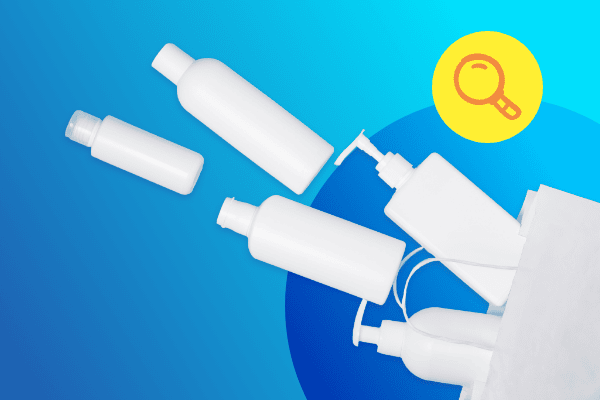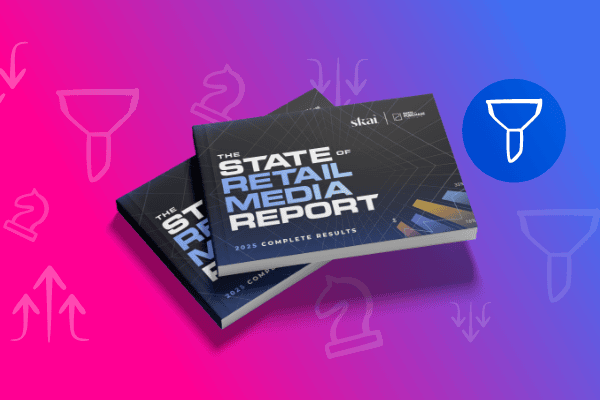Summary
If there was one area of marketing that requires a future-proofed strategy, it’s measurement. As third-party cookies phase out, marketing measurement and optimization face new challenges to remain effective. Marketers need to adopt alternative metrics, utilize machine learning, and focus on quality engagement to maintain accurate campaign performance tracking.
Read the entire Adapting to a Post Cookie World series
- Crafting a Winning Post-Cookie Game Plan: Three Essential Principles
- How to Adapt Research and Planning for the Post-Cookie Marketing Landscape
- Precision Marketing in the New Age: Targeting and Bidding Beyond Cookies
- Redefining Ad Creative and Personalization Best Practices in the Post-Cookie World
- Making Marketing Measurement and Optimization Work Without Cookies
Thank you for joining us for the last installment of our Adapting to a Post-Cookie World series. Much has been written about why third-party cookies are going away, but there hasn’t been enough on how to ensure marketers are ready for it. So far, we’ve established the guiding principles for thriving without third-party data, outlined planning and researching in a post-cookie future, and offered tips for cookieless targeting and ad creative.
In our final post, we explore how third-party data depreciation will make it harder to measure and optimize campaign performance and what marketers can do to address those challenges. As privacy regulations tighten and public opinion shifts, tracking campaigns at the granular level that most marketers have become used to becomes more difficult. To combat this loss, marketers must adopt alternative metrics and methodologies, leverage machine learning for predictive insights, and focus on quality interactions and engagement. Accurate measurement now will require a holistic approach to gaining actionable insights.
While some of the other areas in the campaign lifecycle that we’ve explored will have scattered pockets of change in the post-cookie world, measurement — and its actionable counterpart, optimization — is a layer that will be deeply affected. If you need one place to start working on shoring up your cookieless future, it will be here.
The loss of third-party data means marketers will rely on less granular metrics
Marketers have historically had access to a wealth of granular insights about audiences. From demographic data to device type and location, third-party cookies have long been the foundation of the metrics by which we measure campaign success and plan for future targeting.
With the loss of these signals, marketers have to rely on less granular metrics, which may not provide the depth of insights previously available. This data loss can result in less precise measurement of campaign effectiveness and user behavior, complicating efforts to optimize marketing strategies.
- Implement cross-device tracking to connect user interactions across multiple devices. This approach helps create a cohesive picture of customer behavior and improves the accuracy of measurement and optimization efforts.
- Embrace an opt-in approach to gathering data. According to Google, taking a transparency-first approach to data collection is an important way for marketers to respect privacy while still collecting insights into audience preferences: “If you explain exactly what data will be used and how it will be used when asking for customer consent, more customers will understand what they’re agreeing to. In turn, you’ll gain a better feel for the type of data usage customers are comfortable with and a greater ability to predict when you’ll have gaps in data.” Gather data from sources like user surveys and customer feedback to provide more personal insights from audiences.
How walled gardens can help: Walled gardens are “opt-in” by nature, attracting audiences who engage regularly and enthusiastically with the platforms. In turn, these data-rich environments provide marketers with aggregated metrics and cohort-based insights that still allow for effective measurement while respecting user privacy.
Diminished online tracking leaves a gap between online and offline data
Third-party data can provide a clear picture of how online efforts affect offline behavior. Measuring how much online marketing impacts in-store purchases and other offline behaviors can become difficult without these insights. To fill these gaps, it’s crucial for marketers to embrace new technologies designed to help provide a clear picture of exactly which marketing efforts are driving real-world engagement.
- Upgrading CRM software and integrating it with ERP systems is one of the best ways marketers can understand how online and offline efforts connect. These tools store detailed records of behaviors, segment customers based on interactions, and enable seamless data sharing and collaboration between sales and marketing teams. This holistic approach helps identify trends and patterns, ensuring both teams work towards the same goals and leading to more aligned and effective campaigns.
- Utilize point-of-sale (POS) data integration to link in-store purchases with online marketing efforts. This allows marketers to directly attribute sales to specific online campaigns, providing clearer insights into the effectiveness of digital strategies in driving offline behavior.
How walled gardens can help: Most walled garden platforms provide tools that help advertisers import their own CRM data to provide even deeper insights into how walled garden campaigns translate to offline sales. For example, Meta can report on in-store sales by its users who are exposed to online messaging.
First-party data will become the primary measurement signal
As reliance on third-party data decreases, the pressure to maximize the utility of first-party data for measurement use cases has never been greater. Most marketers are facing a growing need to collect, process, and utilize first-party data more effectively, which requires new systems and potentially significant changes to data governance practices.
This new focus on first-party data also opens up new opportunities to form stronger customer connections as brands personalize experiences that center on privacy and value. Updating measurement strategies can unlock new ways to understand how audiences connect with content.
- Utilize predictive analytics to anticipate customer needs. Marketers can predict future behaviors and tailor their strategies by analyzing trends and patterns in first-party data.
- Build loyalty programs that incentivize data sharing. Offering rewards for completing surveys or participating in feedback sessions can motivate customers to provide valuable insights.
How walled gardens can help: Walled gardens’ advanced data processing and targeting capabilities often include sophisticated tools for personalization based on first-party data collected within their ecosystems. The Amazon Marketing Cloud, for example, allows advertisers to input their own first-party signals to enhance Amazon Ads data, strengthening insights into cross-channel campaign performance.
Depreciation of third-party cookies will dramatically limit attribution models
Attribution models have traditionally relied on third-party data for cross-site tracking. Without these insights, it becomes much more difficult to clearly track a user’s path to purchase, which could lead to over or under-investment in some channels.
To combat this lack of clarity, marketers need to focus on adopting attribution tools that rely on insights from myriad sources to form a complete picture of the path to conversion.
- Incorporate alternative cookieless solutions such as incrementality testing and media mix modeling (MMM) for deeper insights. Incrementality testing involves controlled experiments to determine the additional value generated by marketing efforts by comparing outcomes between exposed and non-exposed groups. MMM uses historical data to measure the impact of various marketing and advertising activities on specific business outcomes, such as sales or conversions. These methods help marketers understand the effectiveness of their campaigns and make data-driven decisions in the absence of third-party cookies.
- Leverage advanced AI and machine learning algorithms with probabilistic matching techniques to predict and analyze customer behavior. These methods help estimate user interactions without relying on third-party cookies, offering a more accurate and comprehensive understanding of campaign effectiveness. By combining AI-driven insights with probabilistic matching, marketers can better allocate resources and optimize strategies across various channels and touchpoints.
How walled gardens can help: Many walled gardens offer proprietary attribution tools that can help marketers understand the effectiveness of their campaigns within the ecosystem. Importing these insights into a platform that measures the effectiveness of each channel can help provide a complete picture of how campaigns are performing holistically across platforms and devices.
Create a future-proofed measurement framework that is flexible enough to handle future restrictions
Marketers must build an agile measurement framework that can adapt to future privacy changes. The time to take note of changing laws and prepare is now. Marketers who fail to invest in compliance now will likely divert resources from other activities in the future, leading to uncertainty in planning. According to Google, “Staying on top of the latest advancements in measurement solutions can help you better understand marketing effectiveness and may even help you meet your KPIs over the course of the year.”
- Stay informed of regulatory and industry changes to third-party data policies. Recent studies have shown that only 20% of marketers feel prepared for a post-cookie future. Keeping up-to-date will make adopting a realistic timeline for shifting strategy easier. No one really knows what the future is beyond third-party cookie deprecation. So, whether it’s a full-time role or new responsibilities for an existing role, ensuring your org is always ready for any new changes should be a priority.
- Regularly audit and update your data practices. Conducting periodic reviews of data collection and storage methods ensures compliance with evolving regulations and maintains customer trust.
How walled gardens can help: In addition to their inherently closed-ecosystem nature, they typically have robust systems in place to manage user consent and ensure compliance with privacy laws, easing the compliance burden for marketers using these platforms.
Get ready for 2025
We hope you found our series on preparing for a post-cookie world illuminating. While the lack of access to third-party data means that most marketers must rethink strategy from planning to execution and measurement, the change comes with new opportunities. An “opt-in” future invites audiences to actively participate in their journeys. Making the most of these new, better-informed engagements ultimately provides exciting new chances at forming even greater personal connections across multiple channels and devices.
Continue checking in on Skai’s The Breakthrough blog for more coverage on this ongoing issue. The latest update is that Google is set to deprecate third-party cookies on Chrome (desktop and mobile) in 2025, which currently accounts for around 65% of global browser access to the Internet. While they technically will still exist, users will need to go into their browser settings and enable third-party cookie tracking — which practically no one will do.
Be ready. Do not wake up on Day 1 without a clear plan in place and ready to go.







